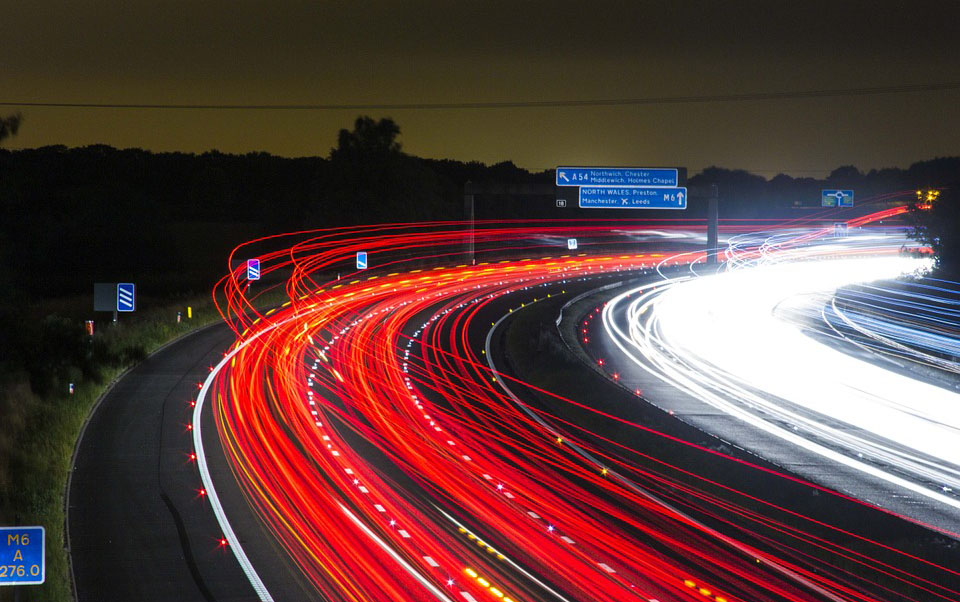My first job out of college was very hands-on. I worked in a laboratory testing the bituminous materials used in road construction. Every month or so, I’d move to a different, temporary laboratory/trailer in a strange city near another highway being resurfaced, and I’d get to work ensuring the road materials were in compliance with the requisite specifications. I quit that job when I noticed that the chemical solution used to separate bitumen from rocks was dissolving my fingerprints. Hands on. Fingerprints off. Unless I wanted to be a burglar full-time, I needed to find a different occupation.
I got a job designing traffic signals and road junctions. While there is a lot of math involved, there is also a lot of studying human behavior. The role was more of a black art than a science. Quite often, people – both pedestrians and drivers – do something other than what you expect them to do. Someone goes straight in a right-turn-only lane. It happens. Run a red light because the two cars in front of you did? That, too.
My specialty was designing traffic light junctions. Humans are hugely inefficient at negotiating junctions, even those that have colored lights telling you what to do. Sit third or fourth in a line of cars at a set of traffic lights and see for yourself. It was a problem I worked on for years as a traffic engineer. It is worse now, of course, with many more distractions available via smartphone. Next time you’re in traffic, look at how many other people on your gridlocked commute are messing with something they shouldn’t be rather than paying attention. A conservative estimate would suggest that a third of drivers are distracted by their smartphone when they should be driving. That has to have an effect.
To this day, I cannot help but critique road junctions and their layouts. I will be sitting in unnecessary traffic studying the layout of a junction, then perhaps remarking to my wife – or, worse, my kids – about some deficiency, then, of course, hate myself for doing so. I save the majority of my angst for new installations. I can’t criticize a traffic engineer from the 1960s who never envisioned a four-fold increase in vehicles passing through his carefully designed intersection.
I am sure you have been driving somewhere on the highway when, for no apparent reason, you suddenly find yourself braking and eventually grind to a complete halt. You sit there for a while, pondering what choices led you to this point in your life (whipping out your smartphone to check the length of backed-up traffic), then, just like that, you and everyone else around you start to move and, within a relatively short time, you are back to your regular speed. The thing is, the wreck you assumed was holding you up is not there. It is gone by the time you get to it, or, more likely, it never existed. Instead, you got caught up on a section of highway that was over capacity. Oh, and congratulations, you just survived a shock wave.
As a nascent traffic engineer back in the 1990s, I learned about road capacity. That is the measure of how many vehicles a certain stretch or road can handle before things become inefficient and congestion occurs. Say it is Friday circa 4 p.m. Cars in all lanes, in front and behind you. When someone enters from the on ramp, those in the far right lane have to start braking because there is too much traffic around them to allow them to change lanes. That braking makes its way down the line of traffic, growing as it moves backward. If the first guy has to tap his brakes to allow a car in his lane, the car 50 cars behind him is coming to a complete stop. Now imagine that at every on ramp or every time someone rashly changes lane without signaling.
The more traffic you direct onto a road, the higher the frequency of traffic jams. Absent a few years directly after the 2008 financial crisis, the number of miles driven in the U.S. has increased year over year, with lower gas prices aiding this. In short: Our roads are filling up with cars faster than we can build new roads. At some point, things stop working. Gridlock ensues.
So what, right? Nothing new here. There have always been traffic jams, and autonomous vehicles will solve all of our woes, after all. Move along, nothing to see here.
Maybe AVs will make all the problems go away, but that claim has yet to be tested. It is a hypothesis, and we do not yet know whether cars that drive themselves will do anything to solve traffic issues. They will certainly help with traffic flows, particularly in congested cities, but, even then, the benefits will likely be temporary and finite. More vehicles should get through busy road junctions, but maybe we're just pushing the issue down the same road a little.
If you free up space on the roads, what will happen? Absent another fuel crisis, the empty spaces on roads will be filled by more vehicles wishing to drive on them. Automated vehicles or not, once you reach capacity, passengers and drivers will suffer.
Road capacity is finite. There are only so many vehicles and people you can get on them at any one time. Since the turn of the century, we have seen a huge reduction in accident frequency, but a lot of that is down to significant technological increases in vehicles braking, improved tire design and a plethora of safety features that no one had thought about in the 1990s. The increase in lift from each technological advance will tend to be smaller.
You now have to share the road with many other commuters, big-box delivery trucks, last-mile Amazon deliveries, ridesharing independent contractors, utility service workers and the sidewalks with 20 mph scooters, pedestrians preoccupied with cell phones and, soon, robotic pizza delivery drones.
Despite the technological advances in safety, it is becoming increasingly hard to prevent auto losses from occurring. How do you combat this? As a safety manager, what’s the best practice for managing the ever-decreasing road capacity along with these new exposures? I recommend the following:
- Keep your vehicle use guidelines updated and communicate to your drivers as often as possible, at least every time there’s a modification to them.
- Read. Every day a new challenge arrives and there is a new safety feature to deal with it. Perhaps in-cab cameras would benefit your fleet? Perhaps it is additional training for your drivers on the risks that scooters pose.
- Understand the inherent exposures that your fleet possesses. Is there a vehicle in your fleet that can drive autonomously already? Do your large truck drivers have difficulty viewing vehicles approaching from adjacent lanes?
- Minimize distractions in the vehicle. Address the use of cellphones when driving and limit consumption of food in the vehicle to when it is parked.
- Factor in a likely increase in journey times for your drivers. There should be nothing gained by speeding.
- Talk. Provide training to your drivers, particularly on the new hazards. Discuss techniques for handling these hazards as a group.







